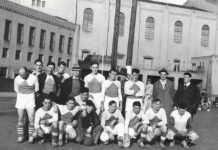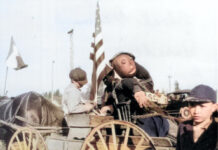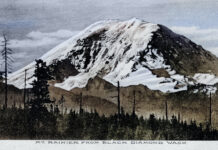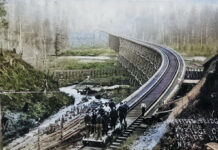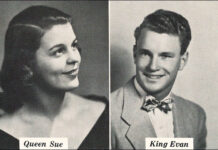At the height of the American football season, we turn our attention to Black Diamond’s 1931 soccer team. But first, a refresher on the three primary styles of football played worldwide. The word “soccer” originated in Britain in the 1880s as a slang abbreviation of “association football,” distinguished from “rugby football,” where players carry the ball. Students at Oxford University created nicknames for those two sports. Association football was shortened to “assoccer,” while rugby football was called “rugger.”
The name soccer was used to differentiate that sport from gridiron football played in North America and Australia. Each gridiron version has its own rules, including Canadian football and Aussie Rules, but the dominant style is played in the United States.
From its early days in the U.S., soccer was most popular in communities with large populations of European immigrants. Black Diamond’s early demographics were dominated by immigrants from the British Isles, especially Wales, due to their expertise in mining coal. After the area’s economy was established, waves of immigrants from southern and eastern Europe, particularly those from Italy and the Slavic countries, came to work in the coal mines.
Black Diamond’s 1931 soccer team played in the Northwest Soccer League and faced off against Dr. Reid’s Electro Dentists, the Vikings, Carbonado, Maple Leaf, and Everett Vikings. Both the Black Diamond and Carbonado teams were sponsored by Pacific Coast Coal Company, which owned the company towns that operated the mines.
According to a team member, Charles ‘Chick’ Thompson, Black Diamond had a distinctive home-field advantage when opposing teams came to play. The Diamond players had a reputation for fighting after games, particularly when they lost. But after a victory, the players and the opposing team usually ended up in the cellars of Italian homes, drinking homemade wine called “Dago Red” and having a jolly good time. Thompson explained it best, “If you came to Black Diamond, you were better off losing, because you’d be in a wine cellar drinking free wine, instead of winning and not being able to drink because your jaw hurt like hell.”
Most of the players and coaches in this 1931 Jacobs Photo have been identified, though there may be some mistakes as to who is who. Kneeling in center: Bill Libke. Front row from left to right: Coach Henry Babb, Johnny Wargo, ? Lewis, Orin Luke, unknown, Steve Androsko, Rufus Weston, Alex Kelly, whose hands rest on Sonny Kelly (or Junior Davidson). Back row from left to right: Val ‘Teeny’ Sternig, Richard ‘Boots’ Pierotti, Alf McArt, Rudy Dernac, Beans Maroni, Charles ‘Chick’ Thompson, Rudy Dernac, Oren Lile, Jack Chilcott, Peter McLean, Dave Purvis. The team players wore a distinctive diamond patch on their uniforms.
In January of that season, with five games left to play, Black Diamond was in third place behind the Vikings, while Dr. Reid’s held a commanding league lead. This photo comes courtesy of the Black Diamond Historical Society, who operate one of the finest small-town museums in Washington. Located at 32627 Railroad Avenue in Black Diamond, the Museum is open Thursdays, 9 am – 2 pm, plus Saturdays and Sundays, 11 am – 3 pm. Admission is always free. Additional information is available at https://www.blackdiamondmuseum.org/


